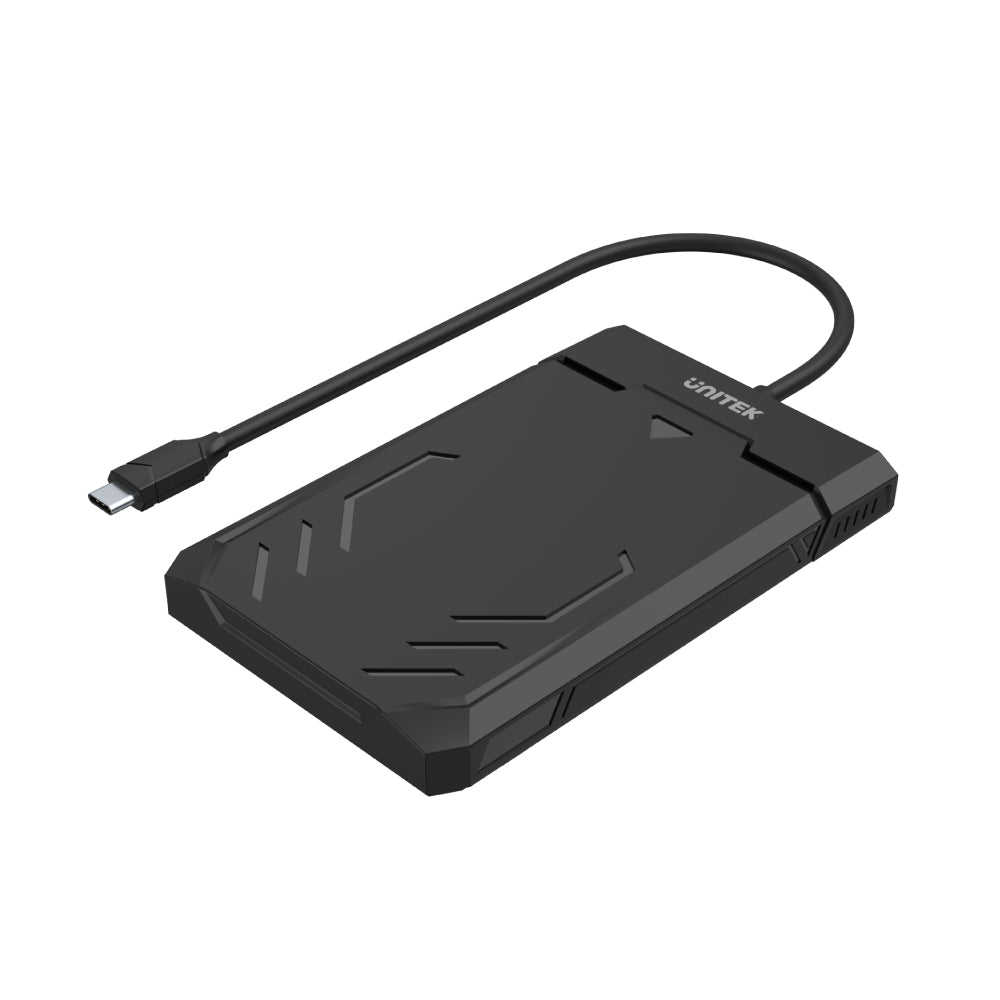






DiskGuard Raiden 2.5" USB-C to SATA III 2.5” HDD/SSD Hard Disk Enclosure
The DiskGuard Raiden 2.5" USB-C to SATA III Enclosure provides a convenient solution for connecting 2.5-inch SATA HDDs and SSDs to your computer. Designed for ease of use, this enclosure supports both 7mm and 9.5mm drives, making it versatile for various storage needs.

eSports Design
Striking science-fictional and mechanical appearance tailored for gamers. This stylish and functional enclosure not only enhances your gaming setup but also provides reliable protection and connectivity for your 2.5” HDDs and SSDs. Perfect for those who want to combine aesthetics with performance.

Toolless Design
With hot-swap support and plug-and-play functionality, you can quickly replace or upgrade your drives without any hassle. This user-friendly approach ensures that you can manage your storage efficiently, making it ideal for gamers on the go.

Fast Data Transfer Speeds
Transfer with UASP technology, providing up to 70% faster read speeds and 40% faster write speeds at the peak of USB 3.0, reaching up to 5Gbps. This impressive performance allows for quick file transfers and efficient data management, making it an excellent choice for gamers and power users alike.

LED Status Indicators
The DiskGuard Raiden features intuitive LED indicators for easy monitoring. The blue LED light signals read and write status, flashing during data transfers, while the green LED indicates power status, illuminating when the device is connected. These visual cues provide real-time feedback, enhancing your user experience and ensuring you stay informed about your device’s activity.
| Operating System | Windows 10/ 11 (32/ 64bit), Linux kernel 3.x, Mac OS 10.6 or above |
|---|---|
| Host Port Compatibility | USB-C |
| Connector Type | 1 x SATA Connector |
| Card Slot | 1 x SATA Slot |
| USB-C | 1 x 5Gbps (male) |
| SSD Compatibility | SATA SSD |
| Data transfer rate | 5Gbps |
| Cable Length | 30cm |
| Dimensions | 130.0mm x 83.0mm x 15.0mm |
| Material | ABS |
| Colour | Black |
- 1 x DiskGuard Raiden 2.5''
- 1 x User Manual
Choose options
